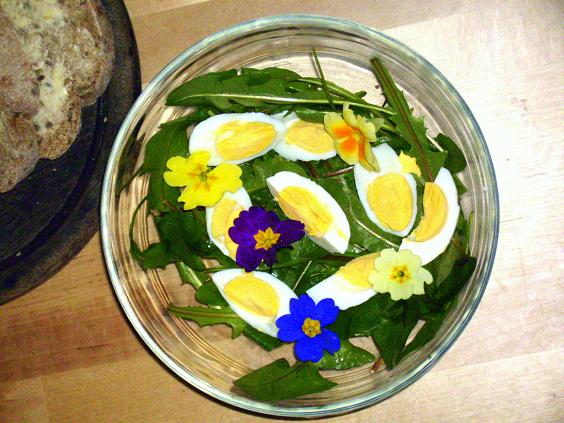 It's the middle of January. The excitement of Christmas and New Year has worn off, and there are still a couple of months of cold wintry weather to go. I'm sick of the rain. I'm sick of the gales. I'm sick of root vegetables and cabbage. So I curl up in an armchair with a selection of seed catalogues and choose what kinds of salad I'll be growing in 2008.
It's the middle of January. The excitement of Christmas and New Year has worn off, and there are still a couple of months of cold wintry weather to go. I'm sick of the rain. I'm sick of the gales. I'm sick of root vegetables and cabbage. So I curl up in an armchair with a selection of seed catalogues and choose what kinds of salad I'll be growing in 2008.Salad leaves are a brilliant choice for a vegetable gardener. Have you seen the prices of those bags of mixed leaves in the supermarkets? You can save money by buying a lettuce from the greengrocer, but sometimes they're a bit limp, and anyway mixed salad is tastier than a heap of shredded cos. If you grow your own you get the best of all worlds - spanking fresh crisp salad, a selection of leaves, no food miles at all, and all for the cost of a packet of seeds.
I like the packets of mixed salad leaves you can get, so you get a variety of different flavours and colours. The important thing to remember is successional sowing. In other words, don't sow all the seeds in the packet at once, otherwise you'll suddenly have dozens of lettuces on your hands that you won't be able to eat before they go to seed, and then you'll have no lettuces at all. I mark out a line with sticks and string, then I sow a few seeds (you can't easily count them - salad seeds are typically very small). A week later I sow a few more, and thin out the plants that have started coming up. I do this once a week through the spring and summer for a continuous supply of salad leaves. If more lettuces come up than I can eat, I cut them anyway and give them to neighbours and friends. It's probably nonsense but I can't help feeling that when you allow plants to bolt it somehow encourages other plants nearby to bolt as well, and before you know it things are going to seed all over the garden. Have you noticed that?
Some salad varieties are good for "cut and come again". Instead of growing the plants until they form mature heads, you cut off the young leaves with scissors, and a new growth of leaves appears later from the base. You can get several crops from a single seed this way, you can sow them closer because they don't grow so big, and you don't need to worry about them bolting. Suitable varieties include chard, corn salad, endive, kale, land cress, sorrel and tatsoi.
Don't forget more unusual salad ingredients. Young dandelion leaves are delicious in a salad - they taste peppery, rather like rocket or watercress. When you pinch out the tops of your pea plants don't compost the tops. They're divine in a salad bowl, and in fact I saw bags of them in Tesco last year, but the price made me laugh. I grow spinach for cooking, but I also love to use the young leaves in a salad, especially a strong-flavoured salad with thinly-sliced red onion rings and perhaps the seeds from half a pomegranate, dressed with black pepper and a splash of balsamic vinegar. Nasturtium leaves are good in a salad if you can wash all the blackfly off them, and the flowers are also edible. The leaves and flowers together make a really attractive salad. In fact a lot of young leaves can be used as salad greens, so whenever you're thinning out seedlings such as turnips, beetroot, radishes etc., why not have a little munch on some of the leaves and decide if you'd like to take the thinnings home for salad, rather than just composting them?
2 comments:
I ordered some things I haven't tried before this year ... one I can't wait to get going is chrysanthenam as a baby salad leaf ... some can be left to grow on to flowering.
The mixed leaf salad packets are brilliant, a bit of everything.
"Nasturtium leaves are good in a salad"
Only if that salad is a good hundred yards away. Vile things, yer nasturtium. Best left to the slugs along with the hostas[1].
[1] Queuing in B&Q once, Pip, then about two, pointed to a trolley full of hostas and asked in a clear voice "Why is that man buying food for his slugs?" I thought the dirty look that followed was undeserved.
Post a Comment